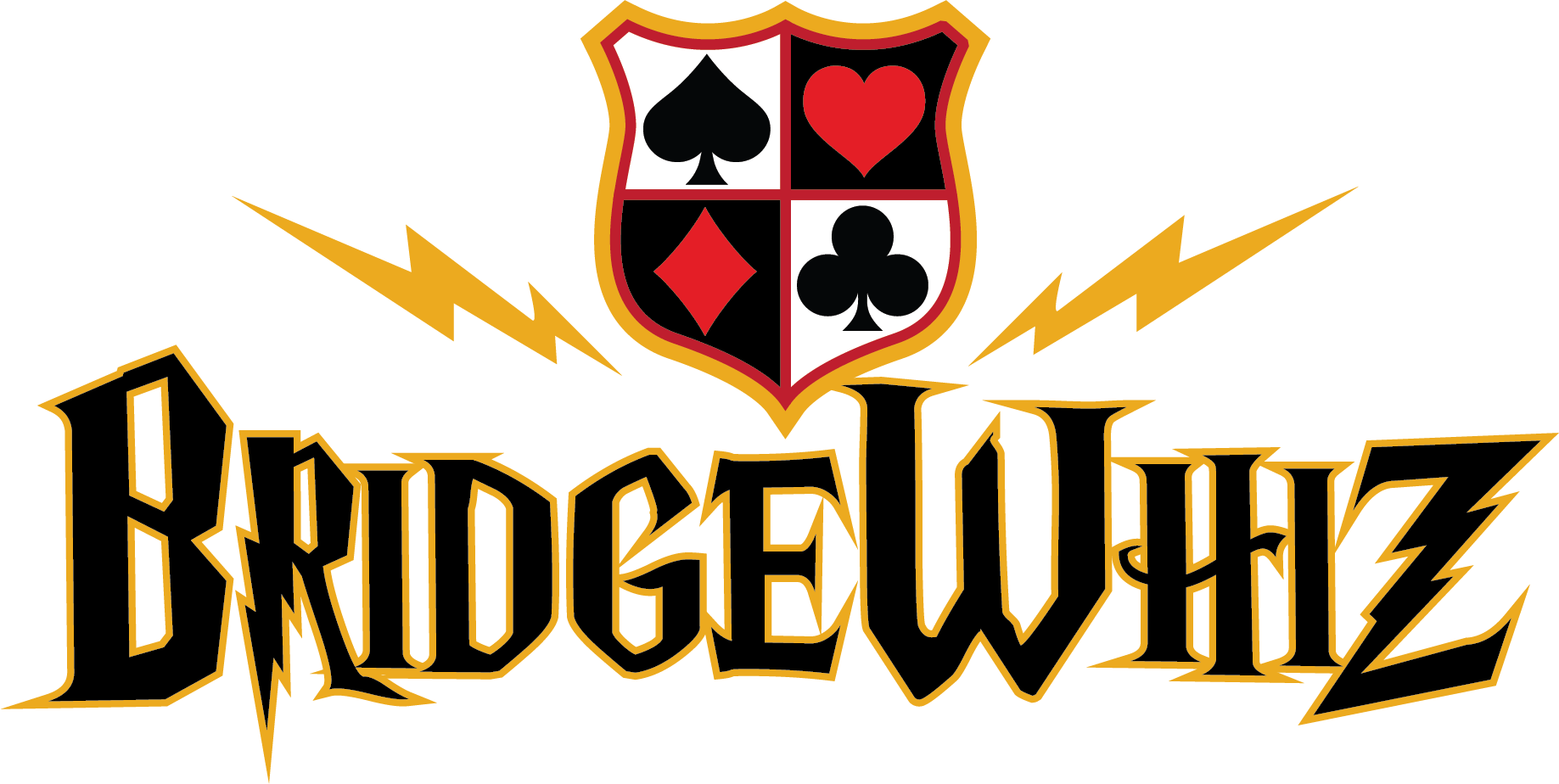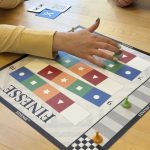Great Bridge Links caught up with Kristen Frederick and Alvin Bender from the ACBLEF for all the important details. Here’s what bridgeurs should know about BridgeWhiz, what it is, and how interested students can sign up.
BridgeWhiz: Bringing Bridge to More… Online

BridgeWhiz: Bringing Bridge to More… Online
By Alex J. Coyne © Great Bridge Links
The ACBL Educational Foundation is launching BridgeWhiz on the 1st of September this year. BridgeWhiz is an exciting, free online program for young contract bridge students who would like to learn more about the game.
Great Bridge Links caught up with Kristen Frederick and Alvin Bender from the ACBLEF for all the important details. Here’s what bridgeurs should know about BridgeWhiz, what it is, and how interested students can sign up.
Important Links
- Pre-Registration for Students: https://www.acbleducationalfoundation.org/page/student-registration-45.html
- ACBL Educational Foundation: https://www.acbleducationalfoundation.org/
What Is BridgeWhiz?
BridgeWhiz is a program which hopes to introduce the game to more youth gamers through video-augmented lessons with professional, certified bridge teachers. Introduced by the ACBL Educational Foundation and its partners, the program is set to go live on the 1st of September this year.
Interested?
The ACBL Educational Foundation has opened up a pre-registration link for interested students. As a trial run, their goal is to recruit 1, 000 students to bridge.
If this is successful, organisers hope that the program continues with a much larger follow-up next year.
Quick Facts About BridgeWhiz
- Partners include the ACBL, ABTA, SharkBridge, and Bridge for Youth.
- BridgeWhiz is available to rural and urban middle schools in every US-state.
- All digital bridge teachers are certified, and background checked.
- All digital bridge teachers have signed a Youth Protection and Policy Agreement.
- Digital classes can accommodate 40 students, each playing the same hands against bots.
- Assistant teachers monitor student playing, ane all lessons follow a clear syllabus.
- Lessons are divided between 75% playing, and 25% whiteboard teaching.
- The program is free for students, and the Foundation will provide a free, one-year Junior Membership in ACBL to each graduating student.
- Classes are once per week, Mondays to Thursdays, in all time-zones during after-school hours. Registration starts on September 1st.
From The ACBLEF
Great Bridge Links and Alex caught up with Kristen Frederick and Al Bender for an interview about everything BridgeWhiz is about. Here’s what the pair had to reveal about this exciting new bridge program.
Great Bridge Links: Could you tell us a little more about how, why, and by who BridgeWhiz is being launched?
Kristen: In 2018 I did a short anonymous survey of 300+ San Francisco NABC attendees – all playing levels and ages. The overriding request by respondents was that the Foundation find a way to engage the next generation of players.
Up until then, we had a few donors who indicated their gifts were to be used to support teachers and students playing bridge and we funnelled those gifts into grants to summer camps and F2F youth bridge-teaching programs.
What developed last year were two significant requests, one in memory of Betsy Ross Bare, the other in honour of Peggy Kaplan, resulting in over $25K in gifts from close to 150 people — all supporting youth bridge. Soon after, we received a most generous gift from the Hawai’i Bridge Center for teaching bridge to young people.
We had a mandate, a pandemic, and a transitioning to digital bridge all in convergence. It was the perfect time for ACBLEF to jump in with two feet and we were lucky enough to engage Al to direct the program.
Al: The curriculum of BridgeWhiz was developed by Bridge for Youth out of Seattle. Bridge for Youth has taught bridge in Seattle area schools since 2011. They were in the forefront of transitioning their face-to face program online.
When their Winter 2021 program registered 110 kids it got the attention of the ACBL Educational Foundation. They were looking for a game-changing youth bridge program to launch in North America.
Great Bridge Links: What will students require to sign up to BridgeWhiz in terms of devices/internet connection?
Al: Students are required to have an internet connection and some type of computing device, PC, laptop, or tablet. An inexpensive tablet works fine fir a student connection
Great Bridge Links: Does a student require any bridge or card knowledge prior to BridgeWhiz?
Al: No prior knowledge of bridge is required. We do ask the students to watch a short bridge video before the first class just for the purpose of introducing some of the terms and logistics of play. The goal is to make the first lesson as smooth as possible
Great Bridge Links: Which platform will be used? Bot play is also mentioned, and which
card-bot has been the choice?
Al: We use Zoom for audio and video. Note students rarely turn on their video.
Our main teaching platform is the Shark Bridge teaching console. Our teaching style is to learn by doing and by making mistakes. There is very little lecture.
To maximize student engagement, we sit every student south at a table with 3 robots. In this way every student experiences the same lesson at the same time. They never waste time playing dummy or meaningless defense.
The robots are part of the Shark Bridge platform. The deals are all constructed for the purpose of the lesson. The robot’s only function is to toss cards, which they do quickly to keep the lesson moving forward at a reasonable pace.
Great Bridge Links: Background screening and teachers. This is extremely important, and thank you. Could you please add a sentence about this?
Al: We have partnered with the ABTA to recruit and vet teachers. We had over 80 teachers apply for BridgeWhiz positions.
A teacher selection committee carefully reviewed credentials of teachers, reviewed sample lessons and interviewed teachers.
The number one criteria in selecting teachers were their skill and experience in teaching kids. [It can be] Very different from teaching adults. Finally, a background check is performed on all teachers
Great Bridge Links: I’d like to know what’s next. Beyond this phase, are there any plans to branch out this program internationally? I would hope the answer is yes! There are many schools who have access to few resources like teachers, but could use bridge as a sport.
Al: Our goal is to engage students from as early as grade 4 through grade 12 with weekly bridge lessons and other bridge activities. After the 20-week basic bridge class students graduate to an optional improver class. This class is also funded by the ACBL Educational Foundation.
Students stay in the improver class as long as necessary until they have master the initial core concepts of bridge.
When their teacher thinks they are ready they graduate to the intermediate class. This class expands the knowledge of the students. The students stay in the intermediate class until their teacher thinks they are ready for the advanced class. In our advanced class students learn how to succeed in tournaments.
Finally for the future bridge stars we find a mentor. Other activities offered are youth tournaments every quarter and youth summer camps
Kristen: Our immediate next step will be to reach out to additional PeachJar, private and home-schooled students on the North American continent. Hopefully other Boys & Girls Clubs as well.
While the ACBL Educational Foundation was able to make a $100K grant for this pilot, increasing its size will take more teachers, more volunteers, and additional financial support.
To engage students internationally, we would need to look at the cost of translating materials into other languages and finding teachers who teach bilingually, as there is frequent communication between the teachers, and communication that needs to happen between the Director and the teachers.
Great Bridge Links: Is there anything you would like us to add?
Al: The 2021 BridgeWhiz is a pilot program. Our goal is to recruit 1,000 students. If this pilot is successful in 2022, we plan to expand the program to reach as many as 3,000 students assuming the funds can be raised to finance a program of this size.
There are online recruiting tools in USA that make BridgeWhiz youth recruiting possible in USA. We do not have the same tools to reach students in Canada or Mexico.
In theory BridgeWhiz to be available to all ACBL districts, however to reach students outside of USA we need an army of volunteers reaching out to schools near where they live.








